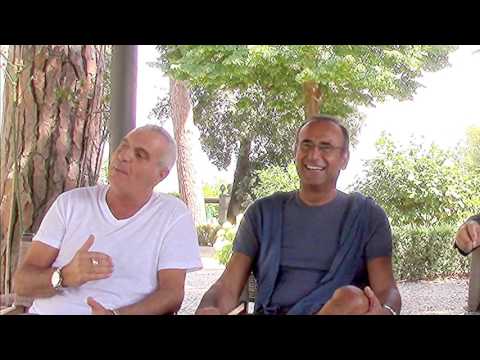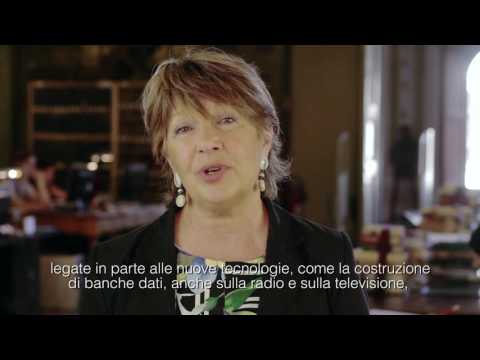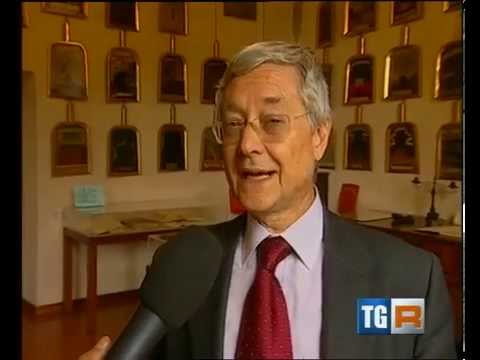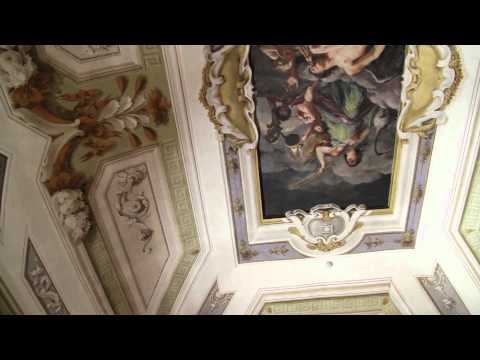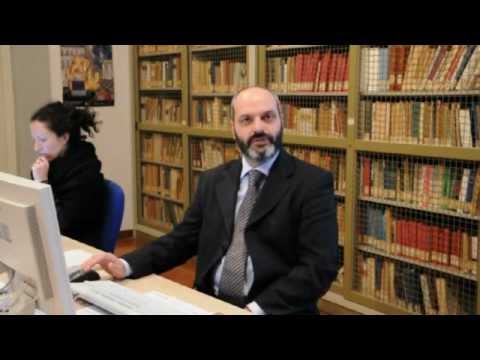The Accademia
In both Italy and worldwide, the Accademia della Crusca is among the leading institutions in the field of research on the Italian language. At present its activity is centered on the following:
- supporting scientific activity and the training of new researchers in Italian linguistics and philology through its Centres and in cooperation with Universities;
- acquiring and spreading, in Italian society as a whole and especially in schools, historical knowledge of the Italian language and awareness of its present evolution, in the context of the cross-linguistic exchanges that are so common in the present world;
- collaborating with the most important foreign institutions as well as with Italian and European Governments, to support the cause of multilingualism on our continent.
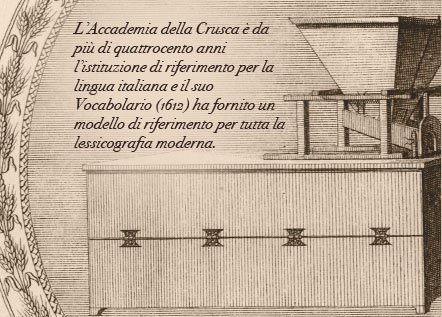
The Accademia della Crusca - literally 'the Bran Academy' - was founded in Florence between 1582 and 1583 on the initiative of five Florentine men of letters. One of them was Lionardo Salviati, inventor of a complete cultural and language-coding programme. The name "Accademia della Crusca" was derived from their lively meetings, playfully called "cruscate" ('bran-meetings'), and came to signify the work of 'cleaning up' the language (the bran is the part of the wheat that is discarded when the grain is cleaned up). The newly founded institution adopted as its motto a line from a poem by Francesco Petrarca: "il più bel fior ne coglie" ('she picks the fairest flower') and built up a rich symbology based on wheat and bread.
From the beginning the Accademia welcomed Italian and foreign scholars of various fields of interest: besides grammaticians and philologists, writers and poets (Tassoni, Maffei, Maggi, Monti, Leopardi, Manzoni, Carducci, ecc.), scientists (Galilei, Redi, Torricelli, Malpighi), historians (Muratori, Botta, Capponi), philosophers, (Voltaire, Rosmini), jurists and statesmen (Witte, Gladstone).
The main accomplishment of the Accademia, the Vocabolario (i.e. Dictionary, dated 1612, reprinted and enlarged several times until 1923), though subject to criticism for the limits it imposed on living linguistic usage, has made an exceptional contribution to the identification and diffusion of the Italian language and has served as an example for the great dictionaries of French, Spanish, German and English.
The new Vocabolario project, developed and started by the Accademia between 1955 and 1985, has the sole purpose of carrying out historical documentation and is one of the major lexicographic enterprises in Europe. The project is now the work of the Opera del Vocabolario Italiano, an Institute of the CNR (Consiglio Nazionale delle Ricerche i.e. 'National Council for Research'), affiliated to the Accademia and directed by Pietro G. Beltrami. The current director of the OVI is Lino Leonardi.
Notices by Crusca
-
Speaker's corner
La competenza linguistica dei giovani italiani: cosa c'è al di là dei numeri?, by Rosario Coluccia.
Activities
-
The Piazza aims at the preservation and at carrying out activities for the promotion of multilingualism in the European Union; 2007-ongoing.
-
Digital integrated archive of didactic materials, iconographic and multimedia texts and documentation for the divulgation of Italian linguistic and historical-cultural heritage, with special regard to the second and third generation Italians abroad; project FIRB; 2009-2013.
-
Creation of Il Vocabolario del fiorentino contemporaneo (Dictionary of Contemporary Florentine Language): project financed by Regione Toscana and Comune di Firenze (first three-year period) and by Federico del Vecchio Bank - Banca Etruria group (second three-year period); 1994-1996/2011-2013.

